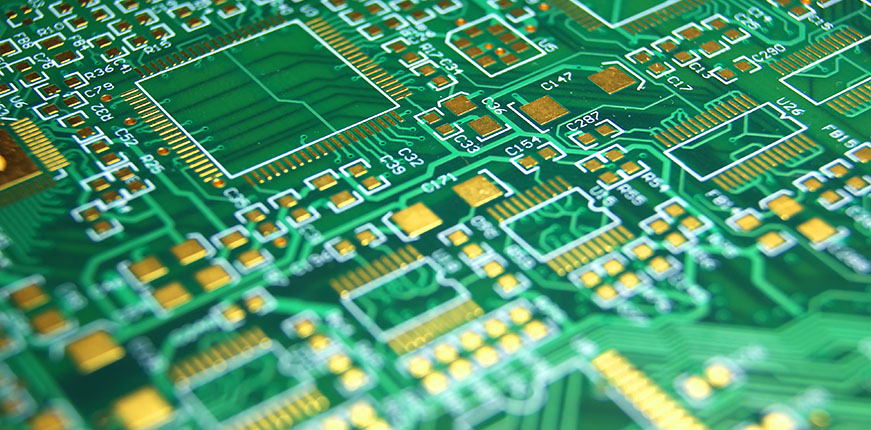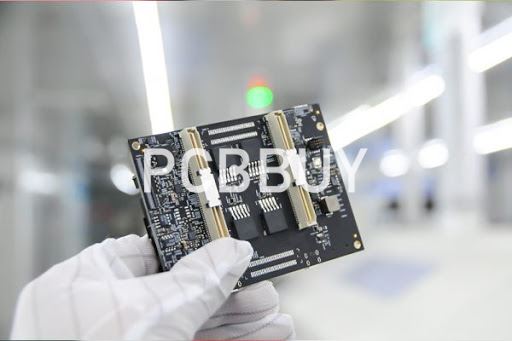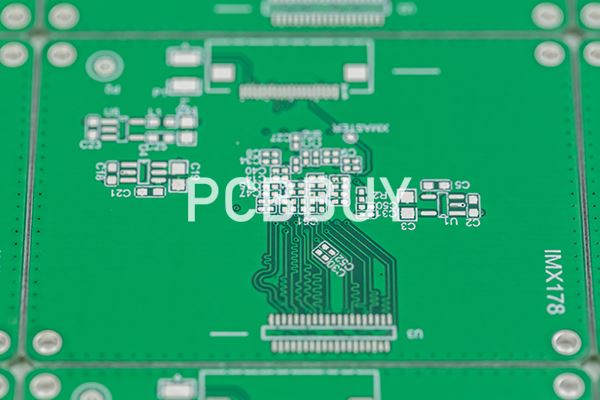HASL PCB
By:PCBBUY 06/01/2021 18:22

Anyone involved within the printed circuit board (PCB) industry understand that PCBs have copper finishes on their surface. If they are left unprotected then the copper will oxidize and deteriorate, making the circuit board unusable. The surface finish forms a critical interface between the component and the PCB. The finish has two essential functions, to protect the exposed copper circuitry and to provide a solderable surface when assembling (soldering) the components to the printed circuit board.
Hot Air Solder Leveling (HASL) was once the tried and true method of deliver consistent assembly results. However, the ever-increasing circuit complexity and component density has stretched the capabilities of even horizontal solder levelling systems to their limits.
As component pitches became finer and a need for a thin coating became greater, HASL represented a process limitation for PCB manufacturers. As an alternative to HASL, alternative coatings have been around for several years now, both electrolytic and immersion processes.

What is HASL?
A HASL surface finish offers high-quality solderability and accommodates multiple thermal cycles while also being one of the more affordable options. It once served as the industry standard, although standards under the Restriction of Hazardous Substances (RoHS) have caused HASL to fall out of compliance. In turn, lead-free HASL has become the more acceptable option in terms of its environmental and health impacts. Although HASL has a long industry history and is well-known among engineers, lead-free HASL is safer to use and better fits the needs of directives like RoHS.
HASL finishes are created by dipping the board into a tin and lead or tin and nickel solder and holding it there for some time. Once the PCB board is removed, hot bursts of air called air knives remove the excess finish. HASL finishing allows for a large processing window, but various factors can affect its evenness and therefore its solderability. The angle of the air knives, the air pressure and the speed of the PCB board’s entry and removal from the solder all influence the finish’s quality.
You’ll find HAL and lead-free HASL surface finishes used for applications such as:
Electrical testing: HASL finishes provide automatic protection for the test pads and vias during electrical testing of the circuit boards.
Hand soldering: HASL finishes are a suitable option for hand soldering processes, as the joints are easily formable.
High-performance electronics: HASL is often a great choice for high-performance and high-reliability applications, like aerospace and military devices, because of its ability to form strong joints.
What is the importance of HASL to PCB manufacturing?
The surface finish you choose for your online PCB will have a significant impact on its quality and usefulness within its parent part. The finish prevents the PCB’s copper layer from oxidizing, which would otherwise decrease its solderability. Applying a finish protects the board from oxidizing before the components are added, ensuring that you can solder the additional elements as needed. Because the PCB’s electrical connections rely on adequate copper conductivity, it’s essential to prevent oxidation and adhere the components as necessary.
Selecting the appropriate finish will depend on various factors, such as the finishing process, the PCB’s design and the quality of the final result. Not all finish types are appropriate for every PCB. Below are a few characteristics to keep in mind when considering the different ones:

1. Solderability
Avoiding soldering issues is essential to creating a PCB that will operate as intended. Smooth surfaces are necessary to ensure a connection that functions adequately within its given environment. Consider whether the surface finish can solder directly to the copper, such as in the case of immersion tin, or if it’s a layered technique, like ENIG.
Good wire bonding is also crucial, considering that different metals require unique manufacturing techniques and behave differently even in the same environments. Wires may consist of materials like aluminum, gold and copper, with each surface finish type being compatible or incompatible with these elements.
2. Processing Time
The processing window for a specific finish may be large or small — finishes like HASL have larger processing windows.
How much time the process takes depends on how complex the assembly is. Some surface finishes, like OSP, have limited thermal cycles and can’t withstand numerous soldering processes. After a few cycles, it will disappear, and the PCB will lose its protection against oxidation. However, an OSP surface finish for a PCB can be reworked during fabrication. The same applies to immersion silver.
ENIG is a more complex finishing process and takes longer to complete, which may make it better to use for PCB production lines that don’t need to output a large number of PCBs in a short time.
3. Reliability
How well will the chosen surface finish stand up to its environment? If your PCB will need to meet specific reliability requirements, you will want a finish that accommodates these. Although cost is only one component of the many other elements mentioned here, you should consider how high the cost of failure will be if the PCB’s finish doesn’t work as intended and fails to protect the surface.
The IPC offers a set of standards under its TM-650 Test Methods Manual that details different ways to test PCBs for reliability and quality. These include techniques such as dimensional verification, chemical resistance, copper ductility and amount of signal loss. One test uses chemicals such as sulfuric acid and isopropanol to determine the effects these substances have on PCB dielectric materials.
4. Corrosion
Some surface finishing types, like silver, can be more vulnerable to creep corrosion than others. This kind of corrosion can occur with essentially any type of finish you use, but it’s most common with immersion silver. As the corrosion of metal elements spreads along the PCB’s surface, it can cause short circuits due to interacting with neighboring features on the board. This issue has become more common as lead-free finishes have increased in widespread use, as lead was notably effective at providing resistance to corrosion.
Creep corrosion is also more common in humid, sulfur-rich environments. Consider what kind of settings your PCBs will be exposed to before settling on any one surface finish. The environment may have a major hand in determining your products’ life cycles.
Industry Category











